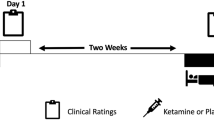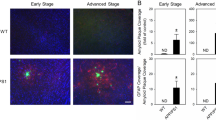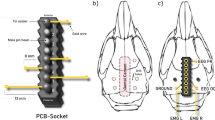Abstract
Adenosine A2A receptor (A2AR) plays a pivotal role in the regulation of sleep-wake behaviors. We previously reported an A2AR selective antagonist compound 38 with an IC50 value of 29.0 nM. In this study, we investigated its effect on sleep-wake regulation in mice. Wild-type (WT) mice were administered compound 38 (3.3, 5.0, 7.5, 15, 30 mg/kg, i.p.) at 9:00, and electroencephalography and electromyography were simultaneously recorded. We showed that administration of compound 38 exhibited a dose-dependent effect on wakefulness promotion. To investigate the impact of compound 38 on sleep rebound, we conducted a 6 h (13:00–19:00) sleep deprivation experiment. We found that administration of compound 38 (30 mg/kg) produced a wakefulness-promoting effect lasting for 1 h. Subsequently, we explored the critical role of A2AR in the wakefulness-promoting effect of compound 38 using A2AR knockout (KO) mice and their WT littermates. We found that compound 38 enhanced wakefulness in WT mice, but did not have an arousal-promoting effect in A2AR KO mice, suggesting that the arousal-promoting effect of compound 38 was mediated by A2AR. We conducted immunohistochemistry and selectively ablated A2AR-positive neurons using cell type-specific caspase-3 expression, which revealed an essential role of A2AR-positive neurons in the nucleus accumbens shell for the arousal-promoting effect of compound 38. In conclusion, as a novel A2AR antagonist, compound 38 promotes wakefulness in mice via the A2AR and exhibits promising applications for further advancements in the field of sleep–wake disorders.
This is a preview of subscription content, access via your institution
Access options
Subscribe to this journal
Receive 12 print issues and online access
$259.00 per year
only $21.58 per issue
Buy this article
- Purchase on SpringerLink
- Instant access to full article PDF
Prices may be subject to local taxes which are calculated during checkout








Similar content being viewed by others
References
Frank MG, Heller HC. The Function(s) of sleep. Handb Exp Pharmacol. 2019;253:3–34.
Wang YQ, Li R, Zhang MQ, Zhang Z, Qu WM, Huang ZL. The neurobiological mechanisms and treatments of REM sleep disturbances in depression. Curr Neuropharmacol. 2015;13:543–53.
Huang ZL, Zhang Z, Qu WM. Roles of adenosine and its receptors in sleep-wake regulation. Int Rev Neurobiol. 2014;119:349–71.
Huang ZL, Urade Y, Hayaishi O. The role of adenosine in the regulation of sleep. Curr Top Med Chem. 2011;11:1047–57.
Lazarus M, Chen JF, Huang ZL, Urade Y, Fredholm BB. Adenosine and sleep. Handb Exp Pharmacol. 2019;253:359–81.
Korkutata M, Lazarus M. Adenosine A2A receptors and sleep. Int Rev Neurobiol. 2023;170:155–78.
Blanco-Centurion C, Xu M, Murillo-Rodriguez E, Gerashchenko D, Shiromani AM, Salin-Pascual RJ, et al. Adenosine and sleep homeostasis in the basal forebrain. J Neurosci. 2006;26:8092–100.
Oishi Y, Huang ZL, Fredholm BB, Urade Y, Hayaishi O. Adenosine in the tuberomammillary nucleus inhibits the histaminergic system via A1 receptors and promotes non-rapid eye movement sleep. Proc Natl Acad Sci USA. 2008;105:19992–7.
Rai S, Kumar S, Alam MA, Szymusiak R, McGinty D, Alam MN. A1 receptor mediated adenosinergic regulation of perifornical-lateral hypothalamic area neurons in freely behaving rats. Neuroscience. 2010;167:40–8.
Methippara MM, Kumar S, Alam MN, Szymusiak R, McGinty D. Effects on sleep of microdialysis of adenosine A1 and A2a receptor analogs into the lateral preoptic area of rats. Am J Physiol Regul Integr Comp Physiol. 2005;289:R1715–23.
Dong H, Chen ZK, Guo H, Yuan XS, Liu CW, Qu WM, et al. Striatal neurons expressing dopamine D1 receptor promote wakefulness in mice. Curr Biol. 2022;32:600–13.e4
Preti D, Baraldi PG, Moorman AR, Borea PA, Varani K. History and perspectives of A2A adenosine receptor antagonists as potential therapeutic agents. Med Res Rev. 2015;35:790–848.
Ma WX, Yuan PC, Zhang H, Kong LX, Lazarus M, Qu WM, et al. Adenosine and P1 receptors: Key targets in the regulation of sleep, torpor, and hibernation. Front Pharmacol. 2023;14:1098976.
Li R, Wang YQ, Liu WY, Zhang MQ, Li L, Cherasse Y, et al. Activation of adenosine A(2A) receptors in the olfactory tubercle promotes sleep in rodents. Neuropharmacology. 2020;168:107923.
Yuan XS, Wang L, Dong H, Qu WM, Yang SR, Cherasse Y, et al. Striatal adenosine A2A receptor neurons control active-period sleep via parvalbumin neurons in external globus pallidus. Elife. 2017;6:e29055.
Oishi Y, Xu Q, Wang L, Zhang BJ, Takahashi K, Takata Y, et al. Slow-wave sleep is controlled by a subset of nucleus accumbens core neurons in mice. Nat Commun. 2017;8:734.
Vijayan D, Young A, Teng MWL, Smyth MJ. Targeting immunosuppressive adenosine in cancer. Nat Rev Cancer. 2017;17:709–24.
Cervetto C, Maura G, Guidolin D, Amato S, Ceccoli C, Agnati LF, et al. Striatal astrocytic A2A-D2 receptor-receptor interactions and their role in neuropsychiatric disorders. Neuropharmacology. 2023;237:109636.
Huang ZL, Qu WM, Eguchi N, Chen JF, Schwarzschild MA, Fredholm BB, et al. Adenosine A2A, but not A1, receptors mediate the arousal effect of caffeine. Nat Neurosci. 2005;8:858–9.
Atack JR, Shook BC, Rassnick S, Jackson PF, Rhodes K, Drinkenburg WH, et al. JNJ-40255293, a novel adenosine A2A/A1 antagonist with efficacy in preclinical models of Parkinson’s disease. ACS Chem Neurosci. 2014;5:1005–19.
Scharbarg E, Daenens M, Lemaître F, Geoffroy H, Guille-Collignon M, Gallopin T, et al. Astrocyte-derived adenosine is central to the hypnogenic effect of glucose. Sci Rep. 2016;6:19107.
Matsuura K, Tomimoto H. Istradefylline is recommended for morning use: a report of 4 cases. Intern Med. 2015;54:509–11.
Leone RD, Emens LA. Targeting adenosine for cancer immunotherapy. J Immunother Cancer. 2018;6:57.
Jenner P, Mori A, Kanda T. Can adenosine A2A receptor antagonists be used to treat cognitive impairment, depression or excessive sleepiness in Parkinson’s disease? Parkinsonism Relat Disord. 2020;80:S28–36.
Ferré S, Köfalvi A, Ciruela F, Justinova Z, Pistis M. Targeting corticostriatal transmission for the treatment of cannabinoid use disorder. Trends Pharmacol Sci. 2023;44:495–506.
Korkutata M, Agrawal L, Lazarus M. Allosteric modulation of adenosine A2A receptors as a new therapeutic avenue. Int J Mol Sci. 2022;23.
Zhu C, Ze S, Zhou R, Yang X, Wang H, Chai X, et al. Discovery of pyridinone derivatives as potent, selective, and orally bioavailable adenosine A2A receptor antagonists for cancer immunotherapy. J Med Chem. 2023;66:4734–54.
Chen J-F, Huang Z, Ma J, Zhu J, Moratalla R, Standaert D, et al. A2A adenosine receptor deficiency attenuates brain injury induced by transient focal ischemia in mice. J Neurosci. 1999;19:9192–200.
Wang YQ, Li R, Wang DR, Cherasse Y, Zhang Z, Zhang MQ, et al. Adenosine A2A receptors in the olfactory bulb suppress rapid eye movement sleep in rodents. Brain Struct Funct. 2017;222:1351–66.
Pagnussat N, Almeida AS, Marques DM, Nunes F, Chenet GC, Botton PH, et al. Adenosine A2A receptors are necessary and sufficient to trigger memory impairment in adult mice. Br J Pharmacol. 2015;172:3831–45.
Urade Y, Eguchi N, Qu WM, Sakata M, Huang ZL, Chen JF, et al. Sleep regulation in adenosine A2A receptor-deficient mice. Neurology. 2003;61:S94–6.
Yuan XS, Wei HH, Xu W, Wang L, Qu WM, Li RX, et al. Whole-brain monosynaptic afferent projections to the cholecystokinin neurons of the suprachiasmatic nucleus. Front Neurosci. 2018;12:807.
Qu WM, Yue XF, Sun Y, Fan K, Chen CR, Hou YP, et al. Honokiol promotes non-rapid eye movement sleep via the benzodiazepine site of the GABA(A) receptor in mice. Br J Pharmacol. 2012;167:587–98.
Ma WX, Li L, Kong LX, Zhang H, Yuan PC, Huang ZL, et al. Whole-brain monosynaptic inputs to lateral periaqueductal gray glutamatergic neurons in mice. CNS Neurosci Ther. 2023;29:4147–59.
Xiong G, Wu Z, Yi J, Fu L, Yang Z, Hsieh C, et al. ADMETlab 2.0: an integrated online platform for accurate and comprehensive predictions of ADMET properties. Nucleic Acids Res. 2021;49:W5–14.
Lazarus M, Shen HY, Cherasse Y, Qu WM, Huang ZL, Bass CE, et al. Arousal effect of caffeine depends on adenosine A2A receptors in the shell of the nucleus accumbens. J Neurosci. 2011;31:10067–75.
Stenberg D, Litonius E, Halldner L, Johansson B, Fredholm BB, Porkka-Heiskanen T. Sleep and its homeostatic regulation in mice lacking the adenosine A1 receptor. J Sleep Res. 2003;12:283–90.
Kuzmin A, Johansson B, Gimenez L, Ogren SO, Fredholm BB. Combination of adenosine A1 and A2A receptor blocking agents induces caffeine-like locomotor stimulation in mice. Eur Neuropsychopharmacol. 2006;16:129–36.
Offit M, Nagle B, Ozay G, Zhang I, Kerasidis A, Torres-Yaghi Y, et al. Adenosine A2A antagonists and Parkinson’s disease. Int Rev Neurobiol. 2023;170:105–19.
Chen JF, Eltzschig HK, Fredholm BB. Adenosine receptors as drug targets–what are the challenges? Nat Rev Drug Discov. 2013;12:265–86.
de Lera Ruiz M, Lim YH, Zheng J. Adenosine A2A receptor as a drug discovery target. J Med Chem. 2014;57:3623–50.
Qu WM, Xu XH, Yan MM, Wang YQ, Urade Y, Huang ZL. Essential role of dopamine D2 receptor in the maintenance of wakefulness, but not in homeostatic regulation of sleep, in mice. J Neurosci. 2010;30:4382–9.
Mochizuki T, Crocker A, McCormack S, Yanagisawa M, Sakurai T, Scammell TE. Behavioral state instability in orexin knock-out mice. J Neurosci. 2004;24:6291–300.
Saper CB, Fuller PM, Pedersen NP, Lu J, Scammell TE. Sleep state switching. Neuron. 2010;68:1023–42.
Groenewegen HJ, Trimble M. The ventral striatum as an interface between the limbic and motor systems. CNS Spectr. 2007;12:887–92.
Bayassi-Jakowicka M, Lietzau G, Czuba E, Steliga A, Waśkow M, Kowiański P. Neuroplasticity and multilevel system of connections determine the integrative role of nucleus accumbens in the brain reward system. Int J Mol Sci. 2021;22.
Roy K, Zhou X, Otani R, Yuan PC, Ioka S, Vogt KE, et al. Optochemical control of slow-wave sleep in the nucleus accumbens of male mice by a photoactivatable allosteric modulator of adenosine A2A receptors. Nat Commun. 2024;15:3661.
Qualls-Creekmore E, Münzberg H. Modulation of feeding and associated behaviors by lateral hypothalamic circuits. Endocrinology. 2018;159:3631–42.
Stratford TR, Wirtshafter D. Evidence that the nucleus accumbens shell, ventral pallidum, and lateral hypothalamus are components of a lateralized feeding circuit. Behav Brain Res. 2012;226:548–54.
Li YD, Luo YJ, Xu W, Ge J, Cherasse Y, Wang YQ, et al. Ventral pallidal GABAergic neurons control wakefulness associated with motivation through the ventral tegmental pathway. Mol Psychiatry. 2021;26:2912–28.
Luo YJ, Li YD, Wang L, Yang SR, Yuan XS, Wang J, et al. Nucleus accumbens controls wakefulness by a subpopulation of neurons expressing dopamine D1 receptors. Nat Commun. 2018;9:1576.
Wang YQ, Li R, Wu X, Zhu F, Takata Y, Zhang Z, et al. Fasting activated histaminergic neurons and enhanced arousal effect of caffeine in mice. Pharmacol Biochem Behav. 2015;133:164–73.
Scammell TE, Gerashchenko DY, Mochizuki T, McCarthy MT, Estabrooke IV, Sears CA, et al. An adenosine A2a agonist increases sleep and induces Fos in ventrolateral preoptic neurons. Neuroscience. 2001;107:653–63.
Kumar S, Rai S, Hsieh KC, McGinty D, Alam MN, Szymusiak R. Adenosine A2Areceptors regulate the activity of sleep regulatory GABAergic neurons in the preoptic hypothalamus. Am J Physiol Regul Integr Comp Physiol. 2013;305:R31–41.
Yu F, Zhu C, Xie Q, Wang Y. Adenosine A2A receptor antagonists for cancer immunotherapy. J Med Chem. 2020;63:12196–212.
Yang JN, Chen JF, Fredholm BB. Physiological roles of A1 and A2A adenosine receptors in regulating heart rate, body temperature, and locomotion as revealed using knockout mice and caffeine. Am J Physiol Heart Circ Physiol. 2009;296:H1141–9.
Basheer R, Strecker RE, Thakkar MM, McCarley RW. Adenosine and sleep-wake regulation. Prog Neurobiol. 2004;73:379–96.
Arnulf I, Konofal E, Merino-Andreu M, Houeto JL, Mesnage V, Welter ML, et al. Parkinson’s disease and sleepiness: an integral part of PD. Neurology. 2002;58:1019–24.
Clark I, Landolt HP. Coffee, caffeine, and sleep: A systematic review of epidemiological studies and randomized controlled trials. Sleep Med Rev. 2017;31:70–8.
Snel J, Lorist MM. Effects of caffeine on sleep and cognition. Prog Brain Res. 2011;190:105–17.
Gardiner C, Weakley J, Burke LM, Roach GD, Sargent C, Maniar N, et al. The effect of caffeine on subsequent sleep: A systematic review and meta-analysis. Sleep Med Rev. 2023;69:101764.
Ranjan A, Biswas S, Mallick BN. Rapid eye movement sleep loss associated cytomorphometric changes and neurodegeneration. Sleep Med. 2023;110:25–34.
Boutrel B, Koob GF. What keeps us awake: the neuropharmacology of stimulants and wakefulness-promoting medications. Sleep. 2004;27:1181–94.
Chen JF, Choi DS, Cunha RA. Striatopallidal adenosine A2A receptor modulation of goal-directed behavior: Homeostatic control with cognitive flexibility. Neuropharmacology. 2023;226:109421.
Lazarus M, Huang ZL, Lu J, Urade Y, Chen JF. How do the basal ganglia regulate sleep-wake behavior? Trends Neurosci. 2012;35:723–32.
Nakamura Y, Midorikawa T, Monoi N, Kimura E, Murata-Matsuno A, Sano T, et al. Oral administration of Japanese sake yeast (Saccharomyces cerevisiae sake) promotes non-rapid eye movement sleep in mice via adenosine A2A receptors. J Sleep Res. 2016;25:746–53.
Monopoli A, Casati C, Lozza G, Forlani A, Ongini E. Cardiovascular pharmacology of the A2A adenosine receptor antagonist, SCH 58261, in the rat. J Pharmacol Exp Ther. 1998;285:9–15.
Kaster MP, Machado NJ, Silva HB, Nunes A, Ardais AP, Santana M, et al. Caffeine acts through neuronal adenosine A2A receptors to prevent mood and memory dysfunction triggered by chronic stress. Proc Natl Acad Sci USA. 2015;112:7833–8.
Acknowledgements
This study was supported by the National Key Research and Development Program of China (2022YFA1604504 to YQW), the STI2030-Major Projects (2021ZD0203400 to ZLH), the National Natural Science Foundation of China (82171479 and 81871037 to YQW; 82020108014 and 32070984 to ZLH), the Program for Shanghai Outstanding Academic Leaders (to ZLH), the Shanghai Municipal Science and Technology Major Project, ZJLab (2018SHZDZX01 to ZLH), Lingang Laboratory & National Key Laboratory of Human Factors Engineering Joint Grant (LG-TKN-202203-01 to ZLH), the Research Funds of Center for Xin’an Medicine and Modernization of Traditional Chinese Medicine of IHM (2023CXMMTCM011 to JH), the Major Project of Natural Science Foundation of the Department of Education of Anhui Province (2024AH040169 to JH), the Inheritance and Innovation Research Project of Traditional Chinese Medicine of Anhui Province (2024CCCX016 to JH), the Academic support project for top-notch talents in disciplines of universities in Anhui Province (gxbjZD2022043 to JH) and the Natural Science Foundation of Shanghai (24ZR1414500 to QX).
Author information
Authors and Affiliations
Contributions
HZ and WXM designed the study, conducted the experiments and drafted the manuscript; LFB, LXK and ZLW analysed the data and discussed the experiments; PCY did the animal experiments; QX, RHZ, CYZ, YHW and LW synthesed compound 38; JH and QX discussed the experiments and revised the manuscript; YQW and ZLH designed the study and revised the manuscript. All authors read and approved the final manuscript.
Corresponding authors
Ethics declarations
Competing interests
The authors declare no competing interests.
Rights and permissions
Springer Nature or its licensor (e.g. a society or other partner) holds exclusive rights to this article under a publishing agreement with the author(s) or other rightsholder(s); author self-archiving of the accepted manuscript version of this article is solely governed by the terms of such publishing agreement and applicable law.
About this article
Cite this article
Zhang, H., Ma, Wx., Xie, Q. et al. Compound 38, a novel potent and selective antagonist of adenosine A2A receptor, enhances arousal in mice. Acta Pharmacol Sin 46, 1177–1189 (2025). https://doi.org/10.1038/s41401-024-01443-0
Received:
Revised:
Accepted:
Published:
Issue date:
DOI: https://doi.org/10.1038/s41401-024-01443-0



